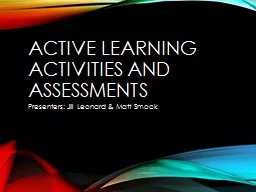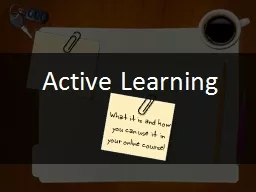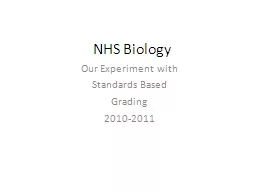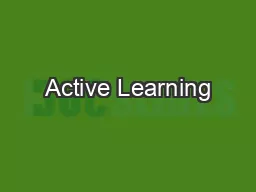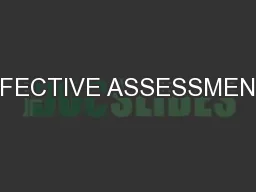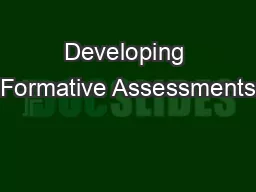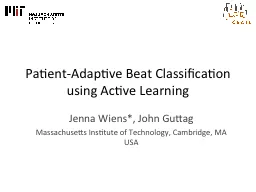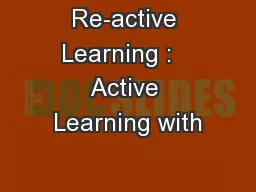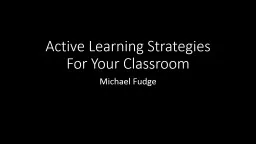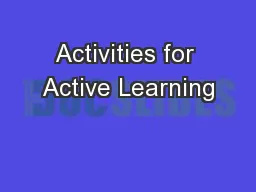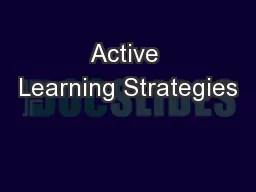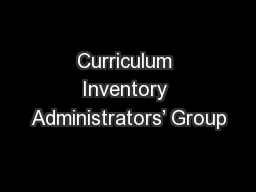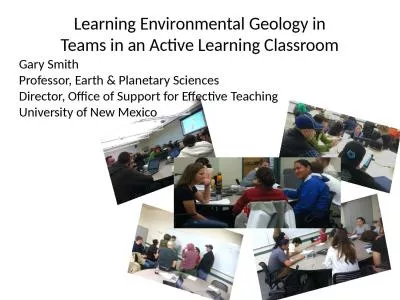PPT-Active Learning activities and assessments
Author : calandra-battersby | Published Date : 2015-11-21
Presenters Jill Leonard amp Matt Smock Objectives Characterize the relationship between lecture and inclass activities Describe different types of active learning
Presentation Embed Code
Download Presentation
Download Presentation The PPT/PDF document "Active Learning activities and assessmen..." is the property of its rightful owner. Permission is granted to download and print the materials on this website for personal, non-commercial use only, and to display it on your personal computer provided you do not modify the materials and that you retain all copyright notices contained in the materials. By downloading content from our website, you accept the terms of this agreement.
Active Learning activities and assessments: Transcript
Download Rules Of Document
"Active Learning activities and assessments"The content belongs to its owner. You may download and print it for personal use, without modification, and keep all copyright notices. By downloading, you agree to these terms.
Related Documents

